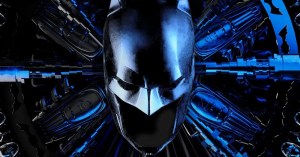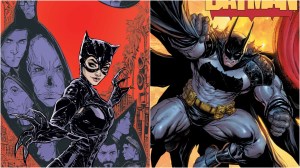
Gotham‘s…unique take on the early Batman mythos has attracted both passionate fans and outspoken detractors.The show has found a unique take on the well-worn Batman origin story, showing Gotham City’s slow descent into violence and depravity as a young Bruce Wayne and a rookie Jim Gordon struggle to find their place in the world.Although Gotham struggled to balance its own storytelling with the deep Batman mythology at first, it found a way to embrace its own insanity and produce plenty of unique but familiar takes on Batman’s deep cast of rogues and enemies.
Videos by ComicBook.com
Gotham was at least partially inspired by Gotham Central, a popular DC series focusing on the Major Crimes Unit and their interactions with Batman and his villains.In addition to that series (which we talked about last week), there’s plenty of other great DC comics thematically similar to Gotham that readers should seek out while the show is on hiatus.Here’s five comic recommendations for those who enjoy watching Gotham:
Batman: Year One

One of the most influential modern comics to the Batman mythology is Batman: Year One, a 1987 story arc written by Frank Miller (the creator of the groundbreaking Dark Knight Returns) and illustrated by David Mazzucchelli. Batman: Year One shows Batman and Jim Gordon at the start of their respective careers, as they struggle to adjust to the unrelenting crime and corruption that plagues Gotham City. Much of the comic focuses Gordon and Batman’s attempts to clean up the Gotham City police force and rid the city of Carmine Falcone, introduced as one of the major causes of crime in the city. Many consider Batman: Year One to be one of the best Batman stories of all time and credit the book for adding additional layers of humanity and motivation to both Gordon and Batman. Christopher Nolan also loosely adapted parts of the comic in Batman Begins.
Arkham Asylum: A Serious House on Serious Earth

Another seminal Batman story, Arkham Asylum: A Serious House on Serious Earth was writer Grant Morrison’s first take on Batman and his twisted foes. Illustrated by Dave McKean, Arkham Asylum explored both the history of the infamous facility as well as transform many of Batman’s foes (including goofier villains like the Mad Hatter and Maxie Zeus) into more serious and depraved threats. The comic follows Batman as he attempts to stop an inmate riot led by the Joker and discovers that the riot has ties to the origins of Arkham Asylum. Not only did Arkham Asylum add a twisted backhistory to one of the most famous landmarks in Gotham, it also showed how the Dark Knight could deliver a psychologically twisted and thrilling story.
Catwoman: When in Rome

While Gotham primarily explores the origins of Bruce Wayne and Jim Gordon, one of the TV show’s breakout characters is Selina Kyle, the young thief who will eventually become Catwoman. Catwoman: When in Rome digs a bit into Catwoman’s complicated past, as Selina and the Riddler look for answers about Selina’s parentage. Traveling to Rome, Catwoman searches for proof that she’s secretly the daughter of Carmine Falcone while dealing with Falcone’s vengeful family and the Italian mob. With its gorgeous and painted artwork, When in Rome is an excellent spotlight on Catwoman, showcasing both her unique skillset and her own detective skills by pulling the cat thief out of Gotham. The comic also ties into The Long Halloween and Dark Victory, two other stories set during Batman’s earlier years that fans of Gotham might also enjoy.
Batman: Earth One

The Earth One series is a newer line of graphic novels that explore “different but familiar” takes on classic DC characters. The Batman: Earth One books, written by Geoff Johns and illustrated by Gary Frank, showcase a Batman who’s still learning on the job and without many of his classic tools and vehicles. Fans of Gotham will particularly enjoy Batman: Earth One‘s take on Alfred, whose gruff military background feels very much in line with Sean Pertwee’s take on the Wayne family butler. The books also explore the relationship between Jim Gordon and Harvey Bullock, whose partnership is far more tenuous and hostile than usually shown in the comics.
The Black Mirror

While Jim Gordon is usually portrayed as a “goody two shoes” in just about every Batman story, Gotham does a very good job of showing that even Gordon and his family has a dark side just waiting to be unleashed. The Black Mirror, a Detective Comics story arc by Scott Snyder and Jock, shows off some of the Gordon family darkness as Gordon and his daughter Barbara struggle with the return of James Gordon Jr., whom Barbara suspects is a serial killer. While James Jr. openly admits he’s a psychopath, he claims he’s receiving treatment and has never acted on his darker tendencies. Gordon acts as a “dark mirror” for both his father and Dick Grayson, who’s acting as Batman after the supposed death of his mentor. The Black Mirror is one of the better Batman stories of recent years and shows that even a family of heroes can produce a little madness and darkness.





